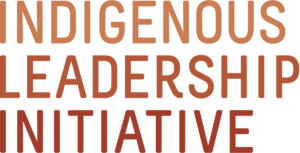Celebrating a Milestone: Indigenous Group Assumes Leadership of Large Conservation Campaign
June 22, 2023
By Valérie Courtois
Something transformative took place at a feast in my home community of Mashteuiatsh, Quebec recently. Representatives from the Indigenous Leadership Initiative (ILI) and the International Boreal Conservation Campaign (IBCC) traveled from across the continent to join Ilnu community members for a ceremony. We enjoyed the sound of the teueiikan (Innu drum) performed by respected Elder Alexandre McKenzie and a delicious super of foods from our lands and waters: moose, geese, beaver, and pickerel were on the menu. And then Steve Kallick, who founded (IBCC) at The Pew Charitable Trusts over 20 years ago and now works with the Resources Legacy Fund and is a senior strategic advisor to ILI, stepped forward and handed me a beautifully carved paddle as a symbol of the transformation journey we have been on for a number of years. I accepted the paddle with honour and humility.
This exchange reflects a profound shift within the conservation movement.
ILI is taking the helm of IBCC’s conservation initiatives in Canada and absorbing IBCC’s remaining staff, assets, and relationships with funders. This milestone marks one of the first times a longstanding, successful environmental campaign has been transferred to Indigenous leadership.
In a world where 80 per cent of all remaining biodiversity is on lands cared for and loved by Indigenous Peoples, it makes sense for Indigenous Peoples to step to the forefront and determine the future of conservation and stewardship within their homelands.
Vice Chief of Pekuakamiulnuatsh Takihikan Guylaine Simard welcomes representatives from ILI and IBCC.
IBCC has long respected this principle. The campaign began more than two decades ago as a coalition of organizations, Indigenous Nations, and scientists that have supported Indigenous-led conservation and stewardship across Canada. Its goal was to conserve the Boreal Forest in Canada—one of the largest intact forests left on the planet. It quickly recognized that respecting Indigenous rights and title and supporting Indigenous Nations aspirations for their lands was the most effective way to sustain the forest.
It also realized that conservation is more than simply advancing protected areas and parks; it’s about contributing to advancing Indigenous Nationhood as an act of deconstructing colonialism and the resulting systems that have historically served to disempower Indigenous Peoples and their Nations.
I first encountered IBCC in 2003, when I was the forest planner for the Innu Nation and was invited to serve on the Boreal Leadership Council. I then became employed by the campaign in 2009 initially as the only Indigenous staff person and was present when several Indigenous leaders and advisors within the campaign formed the ILI as a network in 2013. I have been honored to serve as ILI’s director since then.
ILI Senior Leader David Flood and Kathy Brown listening to stories about the campaign’s history and future.
ILI took on an expanding role within IBCC over the years. At one of the campaign annual retreats Ovide Mecredi, an ILI Senior Advisor at the time, said to IBCC leaders: “Why are we working for you? You should work for us.” We all took this to heart and understood that efforts to advance Indigenous-led conservation and stewardship and to support Indigenous decision-making on Indigenous territories should be guided and fully led by Indigenous Peoples. Together, IBCC and ILI began taking steps to make the campaign reflect this reality.
“This day is one we have looked for and dreamed of for many years,” said IBCC founder Steve Kallick at the celebration last week. “We are deeply grateful to Indigenous leaders for their patience and teaching us so much, and for taking responsibility for this work of sustaining intact, healthy lands across the boreal—work that is so important for everyone on earth.”
On the afternoon of the ceremony, members of ILI and IBCC gathered along the shores of Pekuakami (Lac St-Jean) to share our memories, stories, and vision for the future. My father grew up in Mashteuiatsh, and I spent many summers and holidays at my Kukum’s house on these same shores. My family connections are still strong in the community, despite having been raised as the daughter of an RCMP officer across what is now known as Canada. I am a proud Pekuakamilnu (Innu of Lac-St-Jean), and it felt good to welcome friends and colleagues to Ilnu territory to celebrate our milestone.
The Honourable Ethel Blondin-Andrew, P.C., O.C, sharing reflections along the shores of Pekuakami.
As we shared reflections about the campaign, many expressed the hope that others would be inspired by the transition and the lessons we have learned along the way.
ILI Senior Leader Frank Brown said, “This act of transferring the assets and resources is sending a strong and profound message. As we talk about Indigenous-led conservation, it’s not just about putting brown faces in conservation organizations. It’s about making sure our people are providing strategic leadership.”
The theme of self-determination is at the heart of ILI’s mission. We are dedicated to strengthening Indigenous Nationhood for the fulfillment of the responsibility to care for our lands and waters.
The added resources and capacity that come for absorbing IBCC will enhance our efforts. ILI will continue supporting Nations as they create Indigenous Protected and Conserved Areas, Guardians programs and other expressions of Nationhood. We will continue working to decolonize conservation. And we will continue creating more space for Indigenous Peoples to lead in caring for lands and waters we all depend on.
Members of the ILI Senior Leadership at the community feast in Mashteuiatsh marking the transition.






